Rafinha Alcantara’s Barcelona story was always a peculiar one. Just like his brother, Thiago, before him, the Brazilian was always showing promising signs that he could develop into a world-class player. But as time went by, he unfortunately kept getting sidelined by injury after injury until finally, Barcelona could not take any more. He had to be shipped away.
But despite his fragility, there lies a really talented player beneath those layers of fitness issues and this tactical analysis scout report will use analysis and statistics to give you Rafinha’s in-depth tactical profile.
Player overview
Rafinha Alcantara is a 26-year-old Brazilian midfielder that spent vast majority of his career at Barcelona. Some of his best attributes are, like with many Brazilian players, technical ability, dribbling, passing and ball control.
What he lacks in sheer strength, Rafinha makes up in technical terms and will often beat his marker and set up his teammates, doing so more often than being the one to finish the actions himself.
His biggest enemy, as was mentioned above, are the injuries that keep him from developing further. But when he’s fit and firing, Rafinha truly is a great player. This tactical analysis scout report will now go into more detail with some of his most prominent traits.
Tactical analysis – passing and dribbling abilities
What stands out the most from Rafinha’s game is definitely his technical skill. The Brazilian is always safe on the ball and with his great passing range, he is a danger for the opposition whenever he enters the final third.
Last season, however, he only played a total of 547 minutes, which makes the sample of this analysis rather small. This is really important to point us as his stats have been clearly affected by his game time.
Still, Rafinha’s greatest strengths can immediately be seen with his ability on the ball. He is a rather agile and speedy player who won’t shy away from a duel with his marker. Last season, he averaged 4.61 dribbles per game, completing an impressive 60.7%. We can see his attacking statistics below.

What immediately catches the eye are the dribbles, shot assists and offensive duels, all of which stand out in this section. Rafinha is aggressive in both his offensive and defensive approach and despite not being physically dominant, he won 50% of his duels and on average engaged in 11.19.
But it’s his dribbling and aggressiveness combined with his keen passing skills that make him a rather rounded up midfielder/ forward. Rafinha averaged 93% passing accuracy and 1.15 through passes per game last season, which still makes him threat going forward.
Let’s see how that translates onto the pitch. Teams that can initiate fast break and utilise turnarounds in their tactics would definitely make use of his skillset. Below, you can see how Rafinha beats his man with some quick feet, bursts forward into open space, attracting multiple markers on himself in the process.
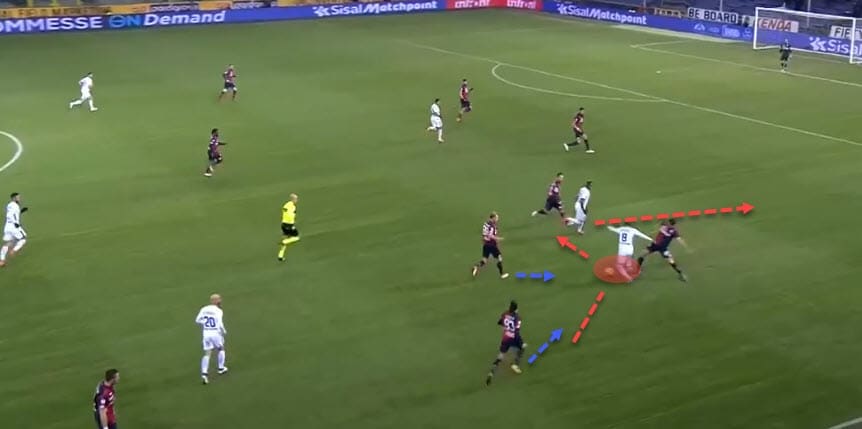
Once he is in the ideal position, he releases the ball and sends it to his teammate, who, thanks to Rafinha, is now isolated and with no opposition defenders around him. This example combines Rafinha’s attacking prowess with his passing abilities, which is usually deployed in a package.
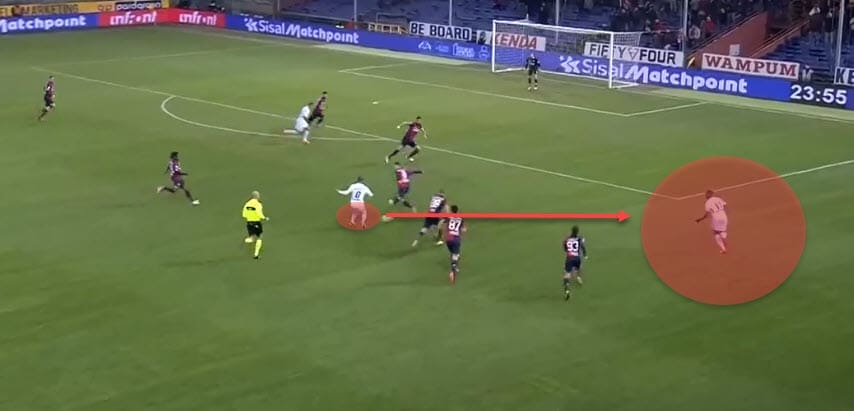
The Brazilian is at his most dangerous when he’s closer to the opposition’s goal but with that being said, his time at Barcelona did sculpt him into a keen passer of the ball from the deeper areas as well.
Rafinha is no stranger to an occasional through ball, as we’ve seen, but he also sent 1.15 long passes per game last season with extremely high accuracy of 85.7%. That means that he can also be proactive from deeper positions while initiating transitions and quick swapping of sides.
Let’s take a closer look at his passing statistics before we move on to on the pitch examples.

From the stats above we can see that Rafinha is really accurate in his passing, which is not a surprise given that he plays at Barcelona but he also sent 6.25 passes into the final third and 12.34 forward passes with 84% accuracy on average.
But what makes this even more impressive is his ability to control the ball in tight areas and with multiple markers collapsing on him. Below, we can him sending a cheeky backheel in his own third which quickly turns into a one-two to get out of the opposition’s press with ease.
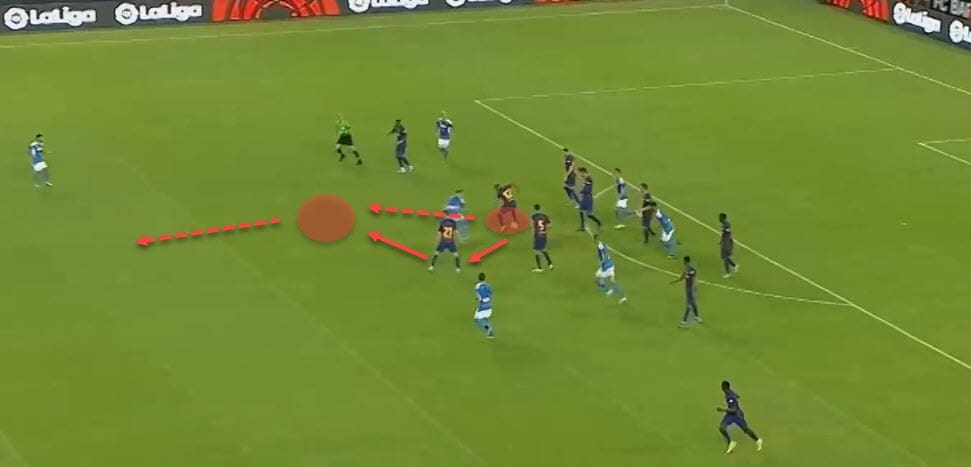
One other stat that can tell us about his activity and movement around the pitch are received passes which stand at 56.11 on average. This means Rafinha is often making himself available for his teammates and works hard to get himself into ideal positions.
Below, we can see an example of how he receives the ball close to the middle of the pitch and then proceeds to send it out deep behind the opposition’s defence and into the feet of his forward.
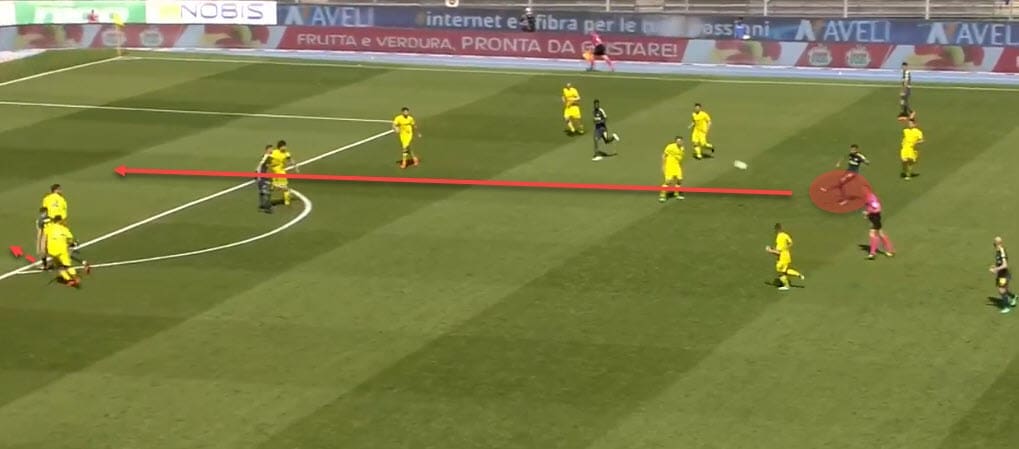
Versatility and defensive contribution
Even though Rafinha is technically considered as a midfielder, he is in fact extremely versatile and can operate in a number of different positions from the middle of the pitch upward. Wyscout’s database shows at least five major positions he can be deployed in.
And a quick glance at his heatmap can tell us the same thing in more detail. Rafinha is extremely active both on and off the ball, meaning that he moves around the pitch almost in a free-roaming role.
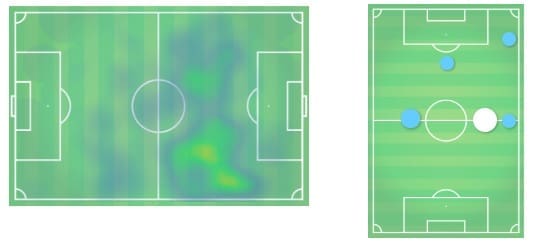
With the decent dose of pace and outstanding technical ability, he is a great player to have in the wide areas or when you’re in a need of someone to progress the ball from the deep. But that also makes him a highly adaptive player to various tactics and systems is his work rate.
Despite the obvious fragility that ails him, Rafinha is still aggressive in his approach and he shows that both in offensive and defensive spectres of his game. For that reason, he can often be seen tracking all the way back into his own half and recovering the ball.
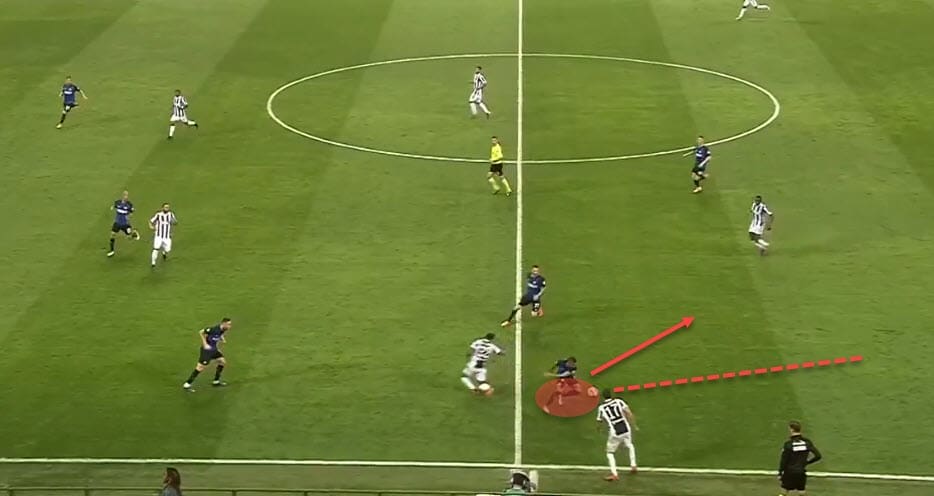
The example above shows exactly that. Despite starting in the opposition’s final third and as a right-winger, Rafinha sprints back in order to tackle his opponent, regain possession and quickly restart his team’s attack.
This is something he also excels at – breaking up the opposition’s action and quickly turning defence into attack despite often being a more advanced playmaker or even a forward.
Notice in the image below how that work rate translates into palpable results. Sergio Busquets loses the ball higher up the pitch but luckily, Rafinha is right next to him and he successfully tracks back and takes the ball away with a perfectly timed sliding tackle.

Last season, he won 59.2% of all of his defensive duels and made 1.65 interceptions per game on average. We have to repeat once again, though, that the sample of games in 2018/19 is far too small for any more in-depth analysis.
To somewhat avoid that issue, let’s compare the 2018/19 Rafinha to the one from 2017/18 when the sample of minutes is far bigger. Note, however, that only La Liga matches have been taken into consideration in the graphs below.
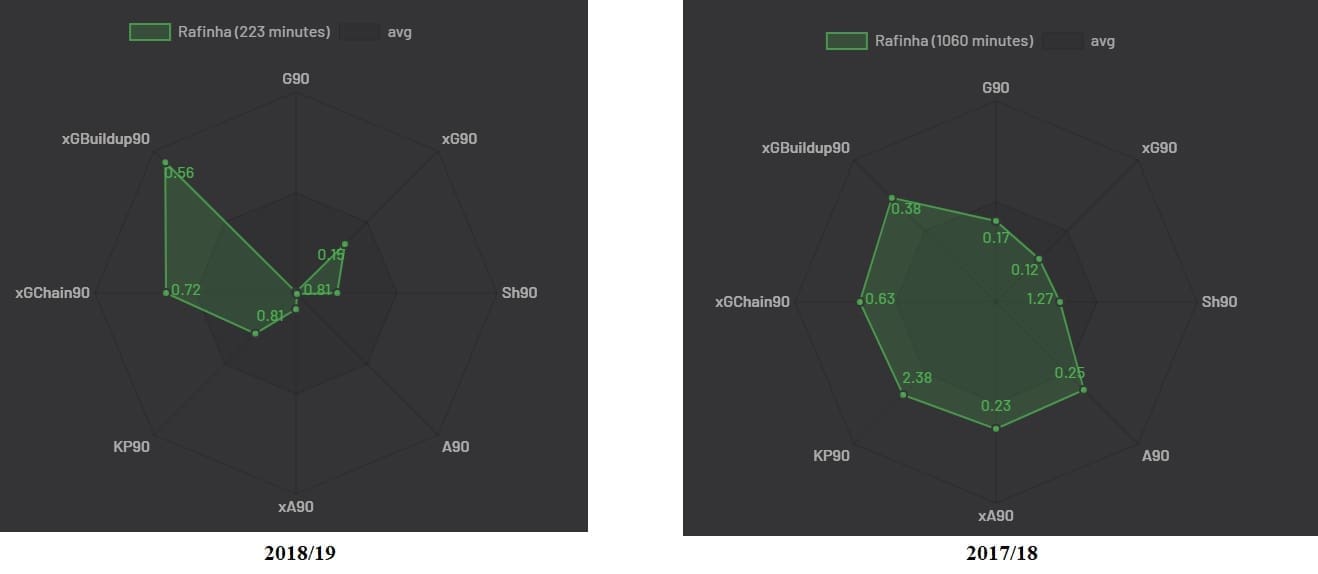
Clearly, when given a bigger role within the team, Rafinha excels at a number of different things. His build-up contribution is emphasised in both cases which goes hand in hand with his impeccable passing abilities.
We can also see how good he is at chance creation with his numbers hitting 2.38 key passes on average in the 2017/18 while he spent a season at Inter in Italy.
His final product contribution, however, is not the highest in either of the cases with his xG per 90 and xA per 90 values not going above 0.12 and 0.23 respectively. This further proves the thesis that Rafinha is the player to regularly get his teammates into great positions but he won’t really often be the one to finish them himself.
Conclusion
This tactical analysis scout report has hopefully given you a clearer image of Rafinha as a player. When he is fit and ready to fire, the Brazilian can be an asset both going forward and backward but unfortunately, he is rarely at his 100%.
Just last season, he missed a total of 41 games due to a cruciate ligament rupture and while in the 2017/18 he was only unavailable for two games, the season before saw him sidelined for 38 once again. That means that he practically missed two full seasons in the last three campaigns.
With such limited game time, both his development and confidence was stagnating or even worse, regressing. Hopefully, he will find his feet once again at his new club. Who knows, had he stayed fit, maybe there could’ve been a career waiting for him at Barcelona, too.

If you love tactical analysis, then you’ll love the digital magazines from totalfootballanalysis.com – a guaranteed 100+ pages of pure tactical analysis covering topics from the Premier League, Serie A, La Liga, Bundesliga and many, many more. Buy your copy of the August issue for just ₤4.99 here, or even better sign up for a ₤50 annual membership (12 monthly issues plus the annual review) right here.

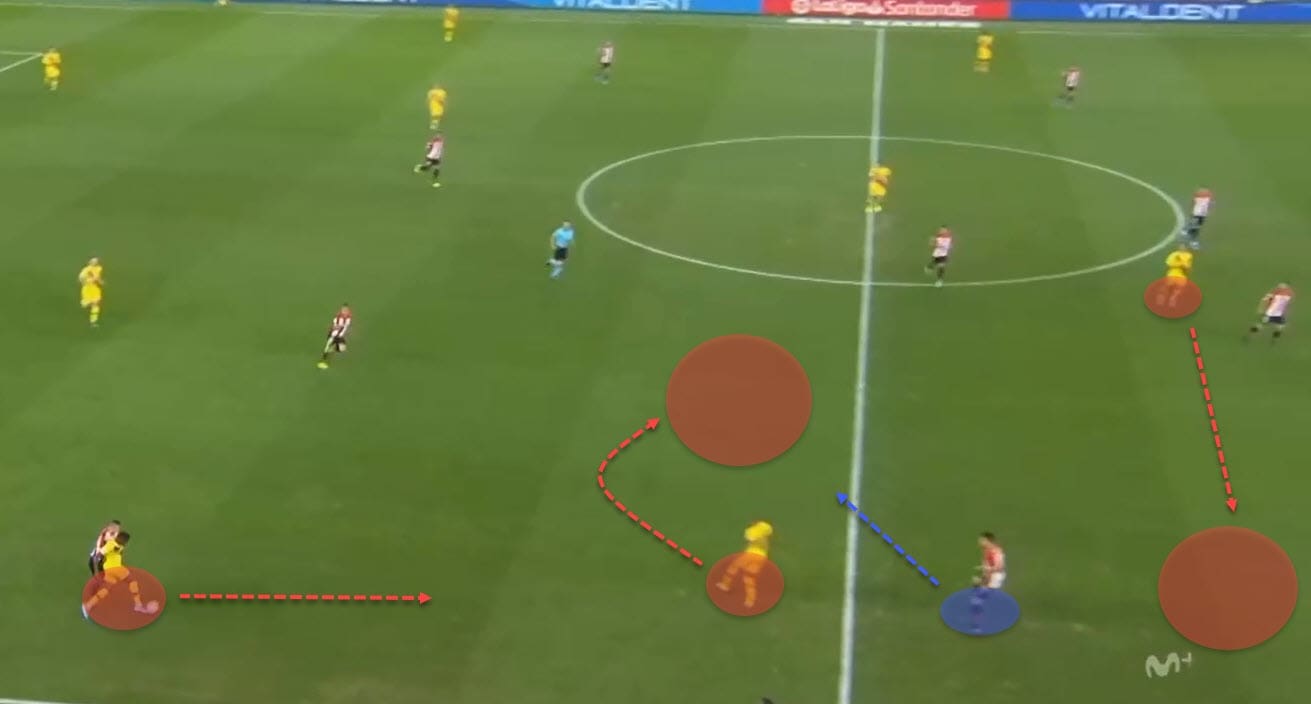



Comments